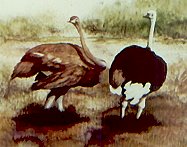Some of these bird pictures I've cropped to save the size of the letter for you, but I've also enlarged some so you can see the bird, so that's why they may not seem too sharp. We'll go from the sublime, the carmine bee eater, to the ridiculous, the ground hornbill.
The carmine bee eaters are gorgeous.
Both Bill and Ed are red/green color blind so they said it looked like a nice
medium bird, while Jo and I raved over it.
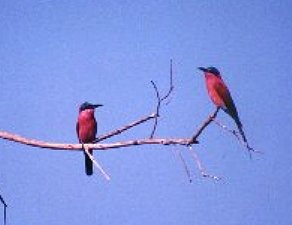
The color of the kori bustard was more for
their vision. It's the heaviest flying bird in southern Africa. The
males fluff their front neck feathers up as a display which makes them appear
even larger. I've seen secretary birds fly and they seem a little bigger,
but maybe they are not heavier.
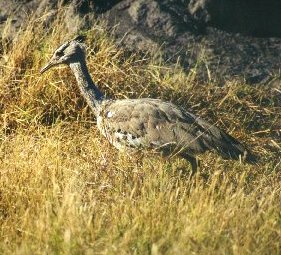
This little Scop's owl was adorable.
He sat in the tree over the table while we had breakfast at Savuti Camp (to be
seen shortly). This owl is only about six or seven inches
tall.
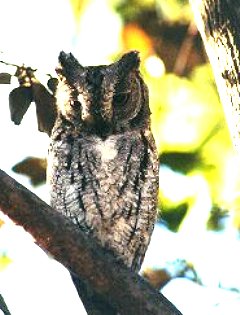
Here are a couple of water birds. The squacco heron.....
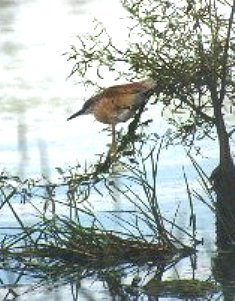
......and the spurwinged goose.
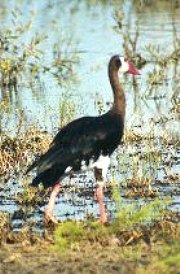
Here's another favorite of ours, the
bataleur eagle. They are going to change its name to short tailed eagle,
which is more descriptive, but not nearly as pretty.
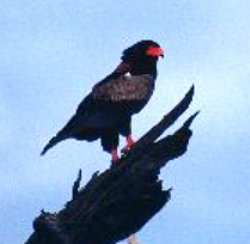
We saw lots of ground hornbills even
though they are supposed to be on the endangered list. They are not
pretty, but are interesting. They are the only (I think) bird that moves
its eyes in the sockets like we do. They also have long eyelashes, so they
do have a different look to them.
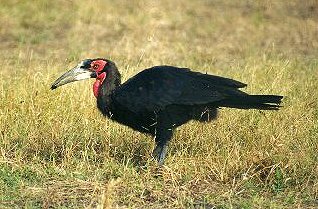
We watched a large group go up into this dead tree. The immature
brown one carried a dead lizard all the way across the field and up
into the tree.
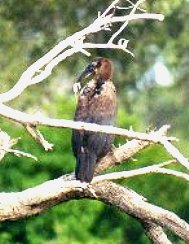
Then he dropped it and one of the adults
climbed down, picked up the lizard and reaching up, gave it back to the young
one. I read somewhere that the adults have to teach the young what to eat
so I imagine that's what was going on--eat this or else, young man.
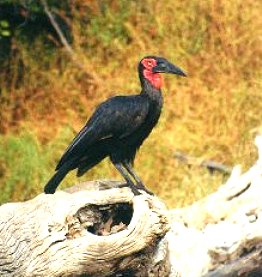
The hornbills have white feathers on the
ends of their wings which only show when they fly. They eat a lot of
snakes and use these white feathers by opening the wings to distract the
snake so it'll strike at the feathers while the hornbill snaps him up.
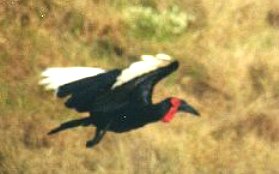
Next will be the end of our stay at Mombo.
